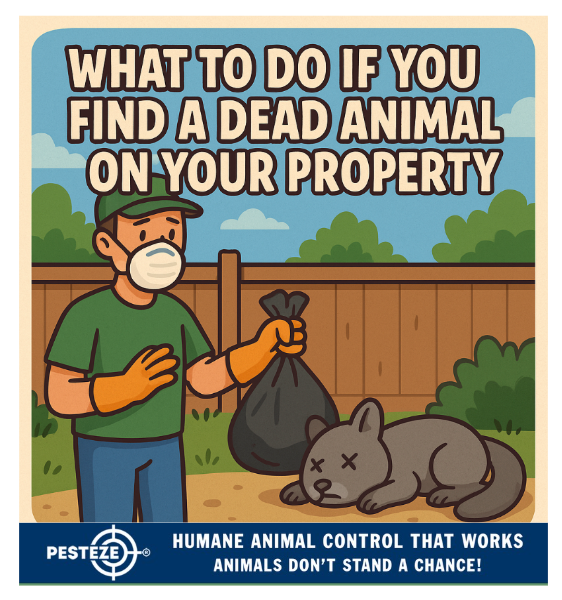WHAT TO DO IF YOU FIND A DEAD ANIMAL ON YOUR PROPERTY

WHAT TO DO IF YOU FIND A DEAD ANIMAL ON YOUR PROPERTY
SUMMARY
Discovering a dead animal on your property can be unsettling, but knowing how to respond is crucial for safety and sanitation. This guide outlines safe, effective, and legal steps to handle the situation while protecting your health and home.
FEATURES
-
Assess the situation: Identify the animal type and location before acting.
-
Protect yourself: Wear gloves, masks, and avoid direct contact.
-
Follow local laws: Check regulations for disposal of wildlife or pets.
-
Use safe removal methods: Bag and seal small animals or call professionals for larger ones.
-
Disinfect thoroughly: Clean the area to remove bacteria, parasites, and odor.
-
Prevent future issues: Identify causes, such as predators, poisons, or access points.
GUIDE DESCRIPTION
Finding a dead animal on your property—whether a bird, squirrel, raccoon, or stray pet—can be both unpleasant and potentially hazardous. Dead animals can carry diseases, attract pests, and create foul odors if not addressed promptly. Taking the right steps ensures safety and compliance with local regulations.
The first step is to assess the situation. Determine what kind of animal you are dealing with and where it is located. Small animals, such as birds or rodents, can often be handled by homeowners, while larger animals like raccoons or deer usually require professional removal.
Always protect yourself before handling the situation. Wear disposable gloves, a mask, and avoid direct contact with the carcass. Animals can harbor dangerous pathogens like rabies, leptospirosis, or parasites that remain infectious even after death.
Next, check local laws and regulations. Some areas require animal control or sanitation services to remove wildlife, while others allow homeowners to dispose of small animals themselves. If the dead animal is a pet, different procedures may apply, including contacting veterinary services or pet cremation providers.
For small animals, use safe removal methods. Place the carcass in a sturdy plastic bag, seal it tightly, and then place it inside a second bag for added protection. Dispose of it according to local waste management guidelines. For larger animals, avoid attempting to move them yourself—contact animal control, wildlife services, or a professional dead animal removal company.
Once the carcass is removed, disinfect the area thoroughly. Use a bleach solution or commercial disinfectant on the affected surface to eliminate bacteria and odors. Dispose of gloves and masks in sealed trash bags and wash your hands thoroughly with soap and warm water.
Finally, take steps to prevent future issues. Dead animals may indicate larger problems, such as predators, poisoning, or openings in your home that allowed the animal to enter. Inspect your property for access points, secure trash bins, and consider fencing or deterrents to reduce risks.
By acting quickly and responsibly, you minimize health hazards and ensure that your property remains safe and clean.
- Saneeth Thota


Comments 0